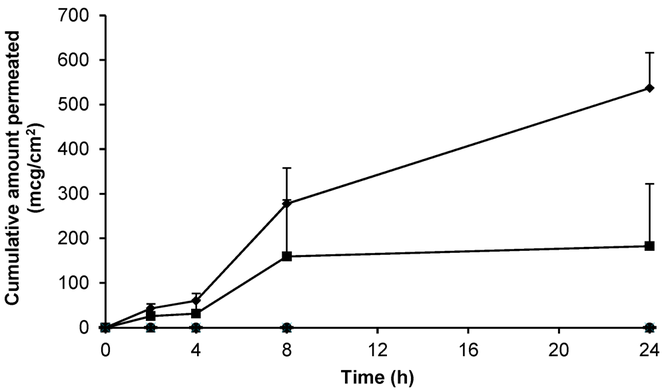- Home
- Blog
- News
- Basics
- Sources
- Agencies, Regulatory & Organisations
- CERSI Excipients Browser
- Excipient Report
- Excipient DMF List
- EXCiPACT Certified Companies
- Excipient Documentation
- Excipient EINECS Numbers
- Excipient E-Numbers
- FDA Inactive Ingredient List
- FDA GRAS Substances (SCOGS) Database
- IPEC Americas
- USP - U.S. Pharmacopeia
- Definitions
- Whitepapers / Publications
- Supplier
- Services
- Media
- Events
- 1st pharmaexcipients Poster Award
- Event Calendar
- Events featured by pharma-excipients
- 4th Annual Formulation & Drug Delivery Congress
- DDF Summit
- ExcipientFest Americas
- ExcipientFest Asia
- Global CompliancePanel
- International Conference and Exhibition on Pharmaceutics & Novel Drug Delivery Systems
- Formulation & Drug Delivery USA Congress
- Laboratory Medicine 2018
- Making Pharmaceuticals Europe
- Making Pharmaceuticals Exhibition
- Pharma Integrates
- PharmaExcipients China @CPhI China
- TTC Technology Training Center
- Jobs
- Online Sourcing
- Contact
08. August 2018
Polymeric gels have emerged as promising vehicles for drug delivery across the skin. Stratum corneum, the topmost layer of the skin, does not allow hydrophilic and high molecular weight drugs to permeate without enhancing techniques. A number of enhancement techniques are being developed to increase the transdermal drug permeation. The transdermal route has many advantages and has therefore evolved as an attractive and convenient alternative to the existing routes of drug delivery that causes...
15. December 2017
The four pillars of Skin Delivery are a result of continuous conversation with the marketplace and our customers: Dermal drug delivery, Mildness, Sensory and Formulation Design. Learn more on why each pillar is crucial and plays an important role for Skin Delivery.
06. September 2017
Abstract : Topical delivery of gabapentin is desirable to treat peripheral neuropathic pain conditions whilst avoiding systemic side effects. To date, reports of topical gabapentin delivery in vitro have been variable and dependent on the skin model employed, primarily involving rodent and porcine models. In this study a variety of topical gabapentin formulations were investigated, including Carbopol® hydrogels containing various permeation enhancers, and a range of proprietary bases including...
06. September 2017
Abstract: Liquid crystal (LC)-forming lipids represent an important class of biocompatible amphiphiles and their application extends to cosmeceutical, dietary, and pharmaceutical technologies. In the present study, we aimed to develop strategies for designing and optimizing oral and topical LC formulations by evaluating their in vitro and in vivo drug absorption performances. C17-Monoglycerol ester (MGE) was used as a LC-forming lipid. p-Amino benzoic acid, methyl PABA, ethyl PABA, and sodium...
02. April 2017
Abstract Topical drug delivery systems provide localized drug action. A hydrophilic polymer such as polyvinyl alcohol is a multi-faceted excipient that can be used as a coating agent, lubricant, stability enhancer and viscosity-increasing agent. The objective of our study was to evaluate the use of polyvinyl alcohol polymer in preparing a topical gel with a diclofenac salt as the pharmaceutical active. The gel was characterized for its rheological and other properties and its effectiveness to...
14. December 2016
Topical hydrogel preparations are applied on skin to obtain local or systemic action. NSAID’s are non-steroidal drugs having excellent anti-inflammatory and analgesic activity but it produces GIT ulceration when used orally. To overcome that problem with oral formulations, many NSAID’s are preferred to be administered by topical route. The present investigation is aimed to formulate the hydrogel of Diclofenac potassium with different ratio of Carbopol of different grades along with guar gum...
30. October 2016
Abstract Diclofenac topical formulations are often preferred for drug administration to patients who experience serious GIT problems. Absorption of the drug through the skin, however, can be challenging due to the natural protective feature of the stratum corneum (SC). In this article, fluid gels prepared from gellan gum were explored as a topical drug delivery vehicle. Rheological analysis of the formulations showed that it was possible to produce a topical gel with a viscosity and the...
14. August 2016
Abstract Cosmetic skin care products currently in the market demonstrate an increasing trend towards antiaging products. Selection of the right formulation approach is the key to successful consumer acceptance. Nanostructured lipid carriers (NLCs) for dermal application can render added benefits to the formulation. Tretinoin a derivative of vitamin A, is a retinoid with anti-aging and anti-acne potential. The present study was aimed at formulating NLCs of tretinoin for reducing the skin...
30. June 2016
Abstract In the development of transdermal and topical products it is important to understand how formulation ingredients interact with the molecular components of the upper layer of the skin, the stratum corneum (SC), and thereby influence its macroscopic barrier properties. The aim here was to investigate the effect of two commonly used excipients, transcutol and dexpanthenol, on the molecular as well as the macroscopic properties of the skin membrane. Polarization transfer solid-state NMR...
09. April 2016
For effective topical delivery, a drug must cross the stratum corneum (SC) barrier into viable tissue. The use of permeation enhancers is a widespread approach for barrier modification. In the current study, flufenamic acid (FluA), a non-steroidal anti-inflammatory drug, is a model agent for investigating the influence of hydrophobic versus hydrophilic enhancers. In separate experiments, FluA in octanol or propylene glycol/ethanol (75/25) is applied to the SC for varying times followed by...



